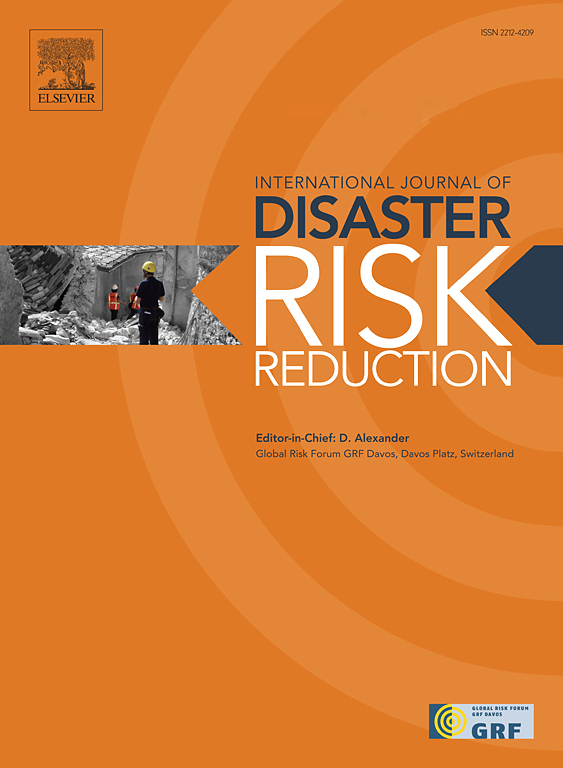Flood risk monitoring in Switzerland: Proof of concept
IF 4.2
1区 地球科学
Q1 GEOSCIENCES, MULTIDISCIPLINARY
International journal of disaster risk reduction
Pub Date : 2025-03-01
DOI:10.1016/j.ijdrr.2025.105337
引用次数: 0
Abstract
The spatiotemporal evolution of flood risk is a challenge for flood risk management. Climate change, land-use change, human intervention, and socio-economic development lead to dynamics in the main risk components - hazard, exposure, and vulnerability. These dynamics require continuous adaptation of risk management strategies to ensure the safety level of humans and their assets in the long term. To enable adaptive flood risk management, it is necessary to monitor the risk evolution. Risk monitoring provides a better understanding of the risk evolution, identifies spatiotemporal differences, and detects location-specific drivers of change. However, flood risk monitoring concepts and their application are lacking. In this study, we evaluate the application of flood risk monitoring using a national case study (Switzerland) with data collected over a time period of 10 years. The continuously updated hazard maps, the number of houses in potentially endangered areas and the degree of damage are used to quantify the evolution of flood risk in terms of potential damage to buildings. The results show varying annual evolution of the flood risk in Switzerland and in different administrative units, the spatial variability of the flood risk evolution, and the variability in the evolution of the flood risk components. Between 2014 and 2023, the total flood risk in Switzerland increased by 26 %, the hazard area increased by 32 % and the exposure by 35 %. The disentangling of risk factors allows a better understanding of important drivers that increase or decrease risk. However, data availability and consistency are challenges for flood risk monitoring.
求助全文
约1分钟内获得全文
求助全文
来源期刊

International journal of disaster risk reduction
GEOSCIENCES, MULTIDISCIPLINARYMETEOROLOGY-METEOROLOGY & ATMOSPHERIC SCIENCES
CiteScore
8.70
自引率
18.00%
发文量
688
审稿时长
79 days
期刊介绍:
The International Journal of Disaster Risk Reduction (IJDRR) is the journal for researchers, policymakers and practitioners across diverse disciplines: earth sciences and their implications; environmental sciences; engineering; urban studies; geography; and the social sciences. IJDRR publishes fundamental and applied research, critical reviews, policy papers and case studies with a particular focus on multi-disciplinary research that aims to reduce the impact of natural, technological, social and intentional disasters. IJDRR stimulates exchange of ideas and knowledge transfer on disaster research, mitigation, adaptation, prevention and risk reduction at all geographical scales: local, national and international.
Key topics:-
-multifaceted disaster and cascading disasters
-the development of disaster risk reduction strategies and techniques
-discussion and development of effective warning and educational systems for risk management at all levels
-disasters associated with climate change
-vulnerability analysis and vulnerability trends
-emerging risks
-resilience against disasters.
The journal particularly encourages papers that approach risk from a multi-disciplinary perspective.
 求助内容:
求助内容: 应助结果提醒方式:
应助结果提醒方式:


